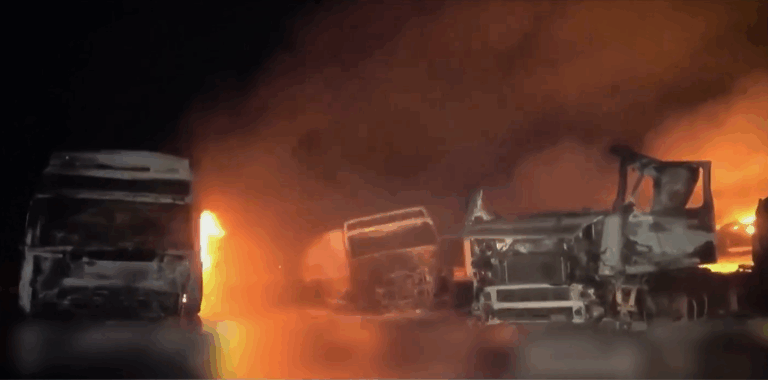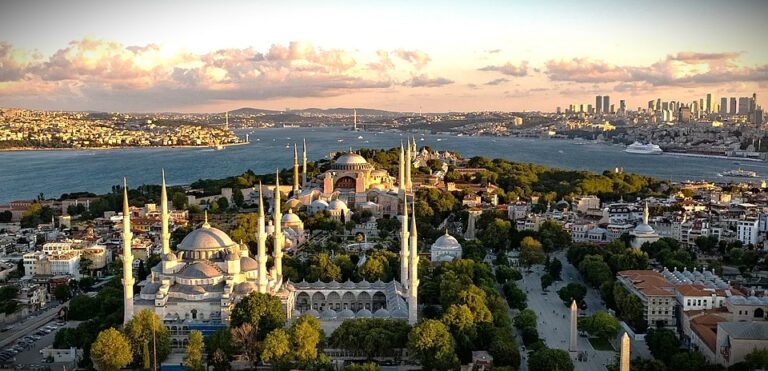
On April 23, 2025, at precisely 12:49 p.m. local time, a 6.2-magnitude earthquake struck the Sea of Marmara, jolting residents across Istanbul and its neighboring provinces. The epicenter was located roughly 40 kilometers southwest of Istanbul, along the highly active North Anatolian Fault — a region long identified by seismologists as a ticking seismic time bomb.
A City Shaken, A Population Startled
The quake lasted approximately 13 seconds, but its psychological and physical impact was immediate and widespread. Istanbul, home to over 15 million people, experienced intense shaking that sent many fleeing into the streets. Panic swept through residential neighborhoods, business districts, and even historical areas like Sultanahmet and Fatih.
Authorities confirmed at least 359 injuries, the majority resulting from people leaping from balconies or being hit by falling objects during the chaos. Istanbul bore the brunt, with 236 injuries reported within city limits alone.
While the structural damage was not on the scale of past catastrophic events, several buildings — particularly older or neglected ones — suffered cracks, partial collapses, or other forms of damage. A derelict three-story building in Fatih collapsed entirely, and damage was reported in other districts including Silivri, Büyükçekmece, and Bakırköy. In several neighborhoods, cell towers temporarily went offline, adding to the confusion and uncertainty.
Aftershocks and a Tsunami Scare
Within hours, over 120 aftershocks had rippled through the region. One of them, nearly as strong as the main event at magnitude 5.9, reignited fears of further damage. Adding to the concern, a minor tsunami was observed along parts of the Marmara coast. While the waves were relatively small, they were strong enough to flood coastal streets in towns like Erdek and Esenköy, temporarily disrupting local traffic and causing minor property damage.
Swift Emergency Response
Turkish emergency services mobilized rapidly. More than 3,500 personnel, including specialized urban search and rescue units, were dispatched. In Istanbul alone, 1,443 responders, 250 vehicles, and 18 rescue dogs combed affected areas for any signs of trapped victims or structural hazards.
As a precaution, the Ministry of Education suspended all classes in Istanbul and Tekirdağ for two days, allowing officials time to assess potential damage to school buildings.
President Recep Tayyip Erdoğan addressed the nation later that evening, stating that there were “no devastating consequences,” but emphasized the importance of readiness and earthquake-resistant infrastructure. His remarks came amid growing concern about Istanbul’s vulnerability to a much larger seismic event in the near future.
Leadership Gap and Urban Resilience
Notably absent during the crisis was Istanbul’s mayor, Ekrem İmamoğlu, who remains in custody following high-profile corruption allegations. His absence was felt more keenly given his earlier initiatives to retrofit aging buildings and shore up the city’s resilience to earthquakes — efforts that many now view as prescient.
Living on the Fault Line
This latest quake underscores a long-standing fear among geologists: that Istanbul is dangerously overdue for a major seismic event. Experts have warned for years that a powerful earthquake could strike the city before 2030, and this latest tremor may well be a harbinger.
The city’s history bears grim reminders — from the 1894 Istanbul earthquake to the 1999 İzmit disaster — of the region’s seismic volatility. As aftershocks continue and engineers inspect damage across the metropolis, the people of Istanbul are once again reminded that they live in a city where the ground beneath their feet is never entirely still.




